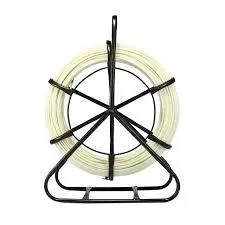
-
 Afrikaans
Afrikaans -
 Albanian
Albanian -
 Amharic
Amharic -
 Arabic
Arabic -
 Armenian
Armenian -
 Azerbaijani
Azerbaijani -
 Basque
Basque -
 Belarusian
Belarusian -
 Bengali
Bengali -
 Bosnian
Bosnian -
 Bulgarian
Bulgarian -
 Catalan
Catalan -
 Cebuano
Cebuano -
 Corsican
Corsican -
 Croatian
Croatian -
 Czech
Czech -
 Danish
Danish -
 Dutch
Dutch -
 English
English -
 Esperanto
Esperanto -
 Estonian
Estonian -
 Finnish
Finnish -
 French
French -
 Frisian
Frisian -
 Galician
Galician -
 Georgian
Georgian -
 German
German -
 Greek
Greek -
 Gujarati
Gujarati -
 Haitian Creole
Haitian Creole -
 hausa
hausa -
 hawaiian
hawaiian -
 Hebrew
Hebrew -
 Hindi
Hindi -
 Miao
Miao -
 Hungarian
Hungarian -
 Icelandic
Icelandic -
 igbo
igbo -
 Indonesian
Indonesian -
 irish
irish -
 Italian
Italian -
 Japanese
Japanese -
 Javanese
Javanese -
 Kannada
Kannada -
 kazakh
kazakh -
 Khmer
Khmer -
 Rwandese
Rwandese -
 Korean
Korean -
 Kurdish
Kurdish -
 Kyrgyz
Kyrgyz -
 Lao
Lao -
 Latin
Latin -
 Latvian
Latvian -
 Lithuanian
Lithuanian -
 Luxembourgish
Luxembourgish -
 Macedonian
Macedonian -
 Malgashi
Malgashi -
 Malay
Malay -
 Malayalam
Malayalam -
 Maltese
Maltese -
 Maori
Maori -
 Marathi
Marathi -
 Mongolian
Mongolian -
 Myanmar
Myanmar -
 Nepali
Nepali -
 Norwegian
Norwegian -
 Norwegian
Norwegian -
 Occitan
Occitan -
 Pashto
Pashto -
 Persian
Persian -
 Polish
Polish -
 Portuguese
Portuguese -
 Punjabi
Punjabi -
 Romanian
Romanian -
 Russian
Russian -
 Samoan
Samoan -
 Scottish Gaelic
Scottish Gaelic -
 Serbian
Serbian -
 Sesotho
Sesotho -
 Shona
Shona -
 Sindhi
Sindhi -
 Sinhala
Sinhala -
 Slovak
Slovak -
 Slovenian
Slovenian -
 Somali
Somali -
 Spanish
Spanish -
 Sundanese
Sundanese -
 Swahili
Swahili -
 Swedish
Swedish -
 Tagalog
Tagalog -
 Tajik
Tajik -
 Tamil
Tamil -
 Tatar
Tatar -
 Telugu
Telugu -
 Thai
Thai -
 Turkish
Turkish -
 Turkmen
Turkmen -
 Ukrainian
Ukrainian -
 Urdu
Urdu -
 Uighur
Uighur -
 Uzbek
Uzbek -
 Vietnamese
Vietnamese -
 Welsh
Welsh -
 Bantu
Bantu -
 Yiddish
Yiddish -
 Yoruba
Yoruba -
 Zulu
Zulu


Agosti . 31, 2024 05:06 Back to list
chain block and lever block
Understanding Chain Blocks and Lever Blocks A Comprehensive Guide
Chain blocks and lever blocks are two essential tools in lifting and moving heavy loads. They serve various applications in construction, warehouses, and other industries where heavy machinery and materials are routinely handled. Understanding their mechanisms, advantages, and uses is vital for anyone involved in heavy lifting operations.
Chain Blocks
A chain block, often referred to as a chain hoist, utilizes a chain mechanism to lift and lower heavy items. The structure comprises a block and tackle system, where a chain is wrapped around a wheel, creating a mechanical advantage. The operator pulls on the chain, which engages the gears inside the block, transmuting force to lift the load. Chain blocks can support significantly heavier weights than manual labor while minimizing the risk of injury.
One of the key advantages of chain blocks is their ability to provide precise control over the load being lifted. This feature is especially beneficial in construction and assembly tasks, where exact positioning is necessary. Furthermore, chain blocks come in various sizes and capacities, making them suitable for a wide range of lifting requirements.
chain block and lever block

Lever Blocks
On the other hand, a lever block, or lever hoist, operates on a different principle. It uses a lever and ratchet mechanism to lift loads. The operator pulls down on the lever, which engages the ratchet, effectively raising the attached load. Lever blocks are compact and lightweight, making them easily portable and suitable for tight spaces where traditional lifting equipment might not fit.
One of the significant advantages of lever blocks is their versatility. They can lift items in various orientations and are well-suited for horizontal pulling applications as well. This flexibility makes them popular for tasks such as pulling, lifting, and securing loads in different settings.
Conclusion
Both chain blocks and lever blocks offer practical solutions for lifting and moving heavy loads. The choice between them typically depends on the specific application, the weight of the load, and the working environment. Understanding the unique features and benefits of each tool enables operators to select the most effective lifting solution, enhancing safety and efficiency in their operations. Whether in a construction site or a warehouse, mastering the use of these handy devices can significantly improve productivity and ensure safer work practices.
Latest news
What Are Construction Tools and How Are They Used?
NewsJul.11,2025
Professional-Grade Duct Rodding Tools for Superior Cable Installation
NewsJul.11,2025
Enhancing Safety and Efficiency with Modern Hot Stick Solutions
NewsJul.11,2025
Empowering Cable Installation with Advanced Rodder Solutions
NewsJul.11,2025
Elevate Your Cable Installation Projects with Cable Pulling Tools
NewsJul.11,2025
Efficient Cable Handling Solutions: Cable Rollers for Sale
NewsJul.11,2025











